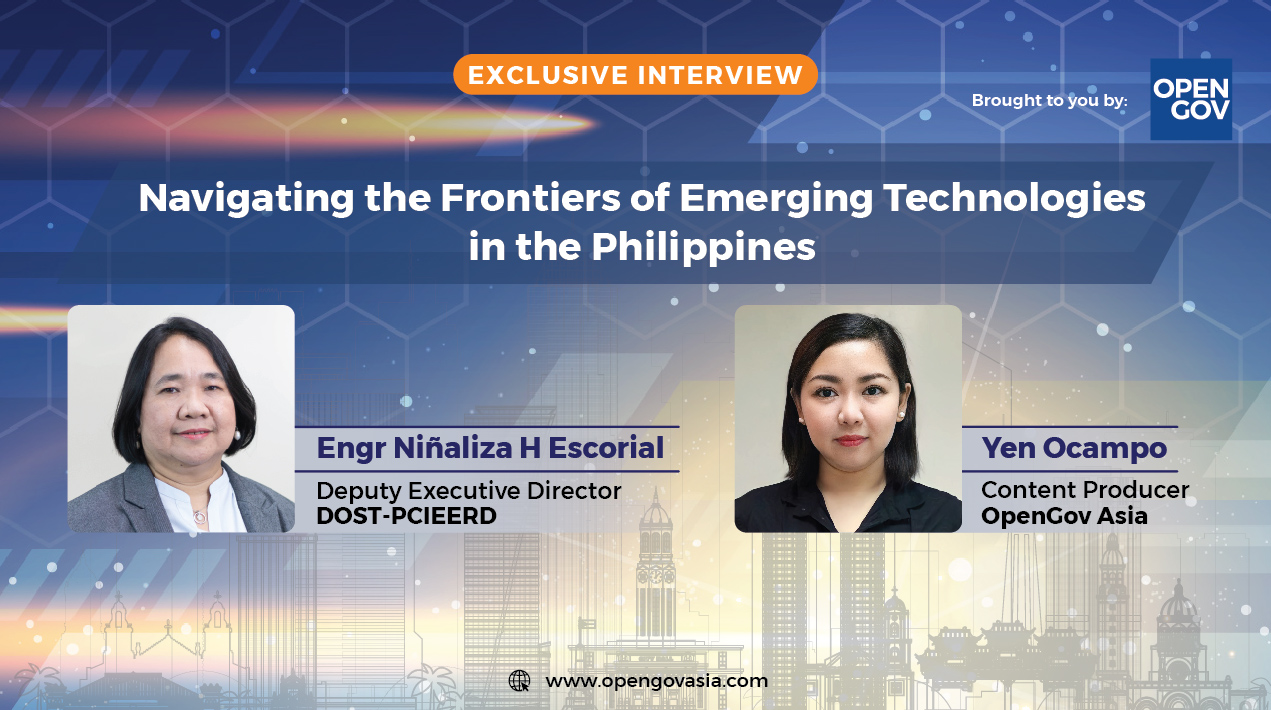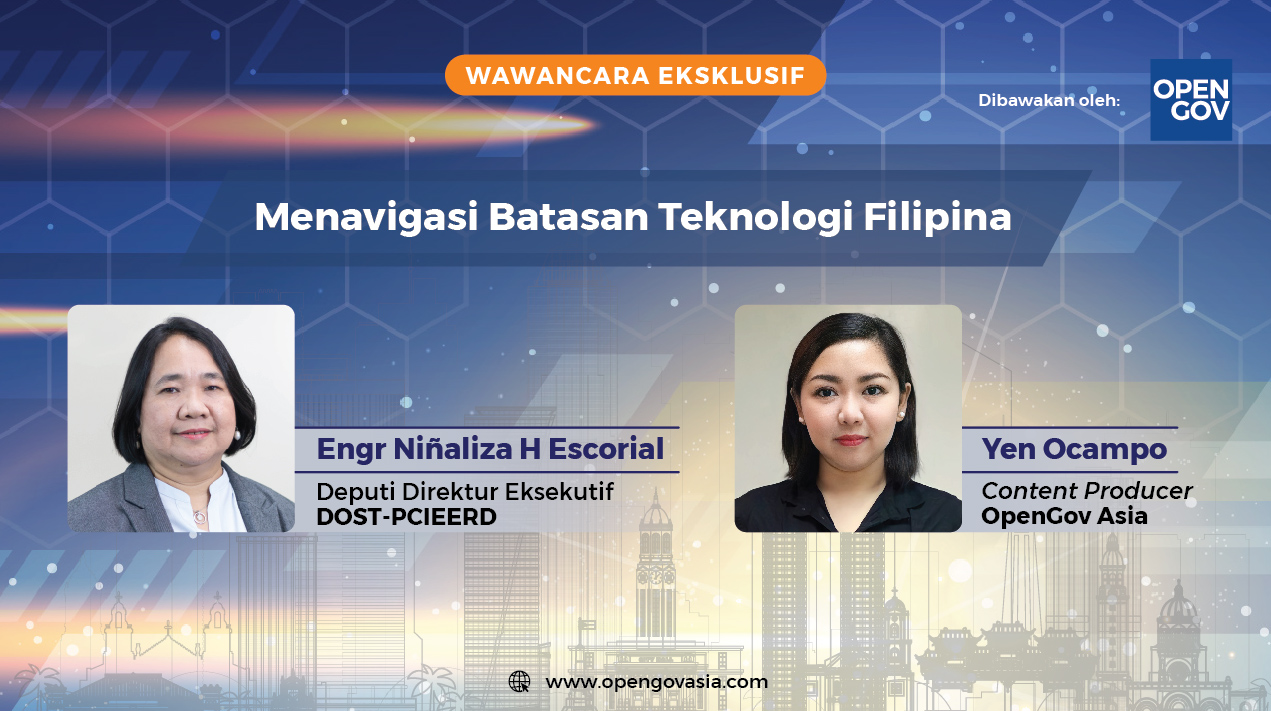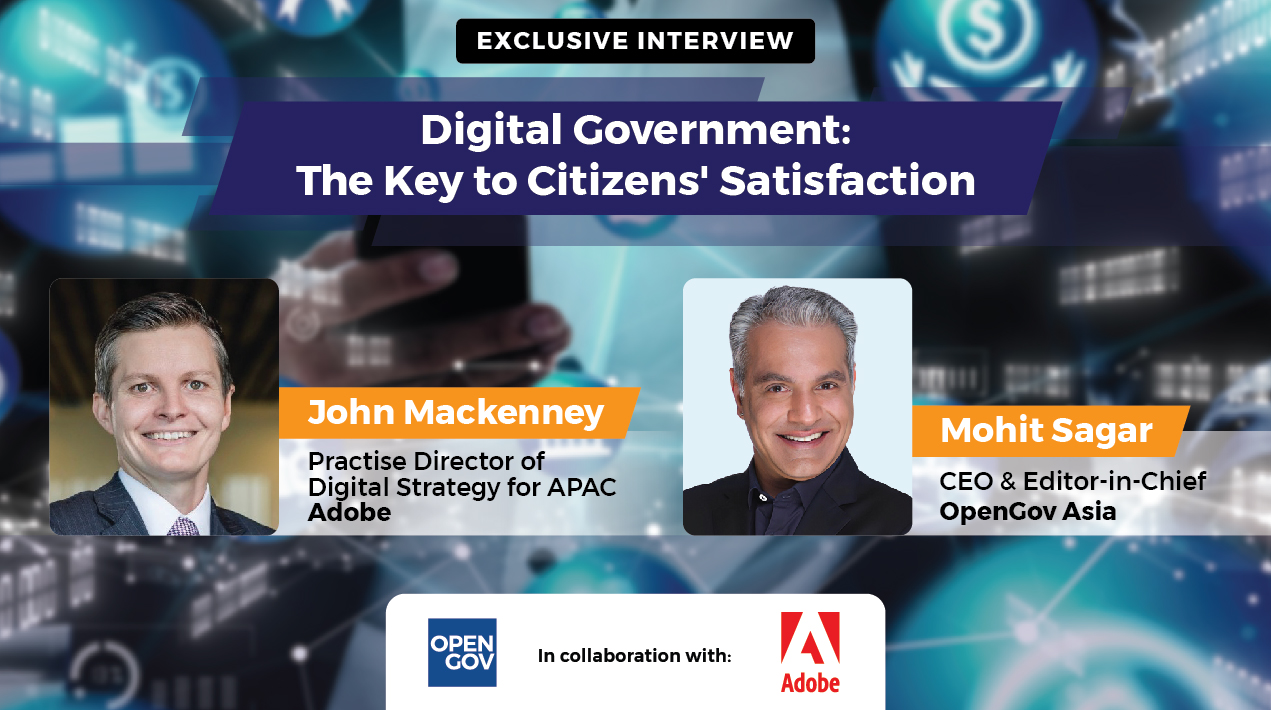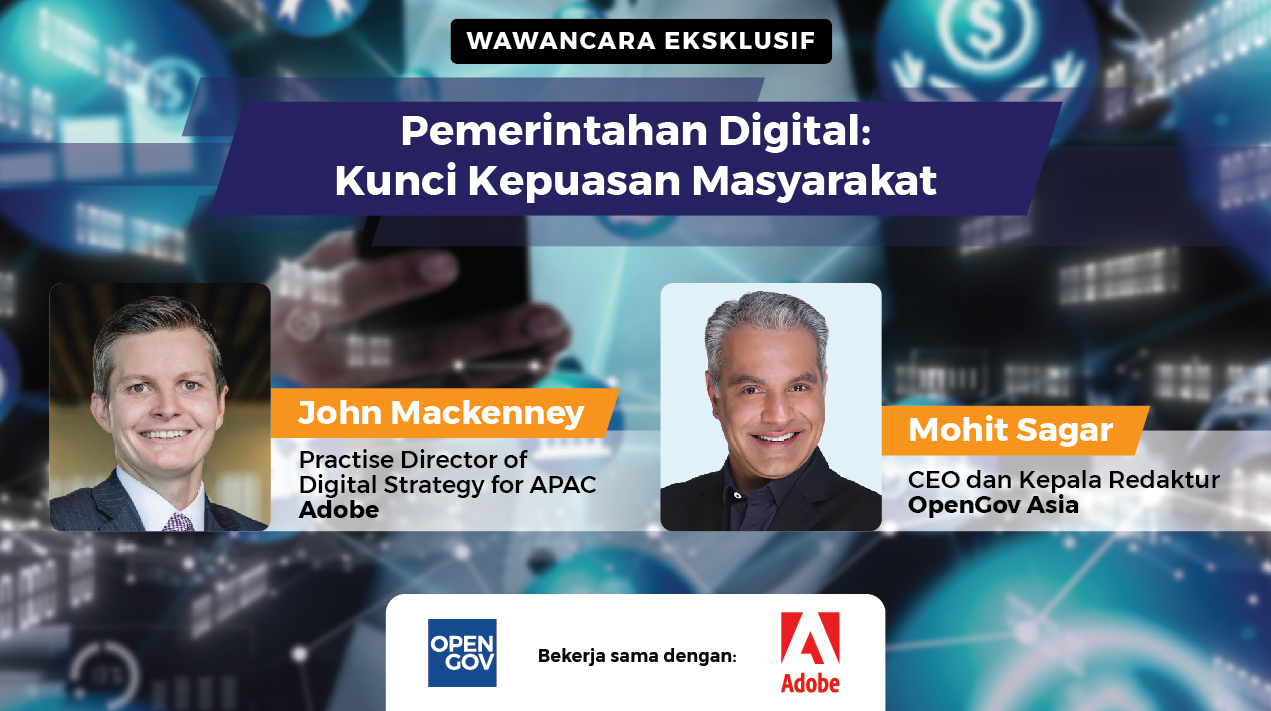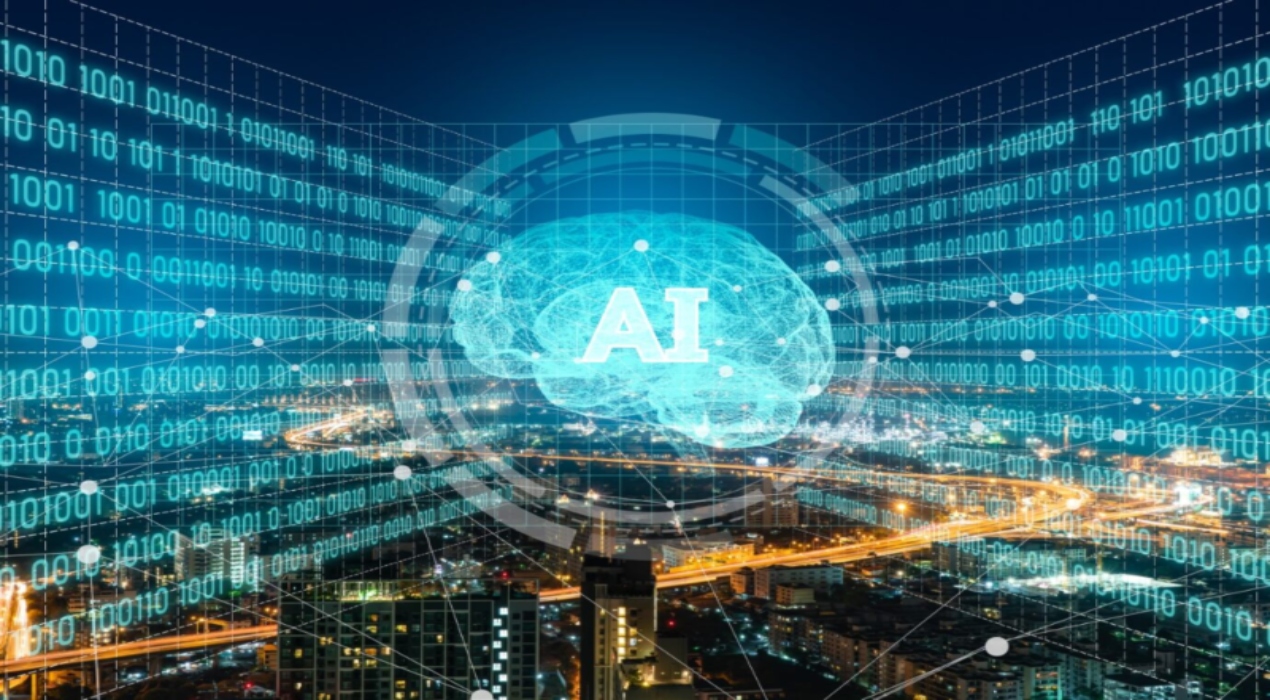
Today cities around the world are aspiring to append ‘smart’ to their names. Smart urban transportation is an essential component of any smart city. It is a key enabler of economic growth and competitiveness, as well as sustainability.
OpenGov conducted an e-mail interview with Jean-Francois Beaudoin, Senior Vice President, Asia Pacific at Alstom to learn about the how Information and Communications Technologies (ICT) are transforming urban transportation and how they can help tackle many of the challenges.
Alstom is a world leader in integrated transport systems. The French multinational company offers a complete range of solutions (from high-speed trains to metros, tramways and e-buses), passenger solutions, customised services (maintenance, modernisation), infrastructure, signalling and digital mobility solutions.
In Singapore, Alstom has been active for nearly 20 years. Alstom is a major supplier of turnkey solution, signalling, rolling stock and infrastructures for Singapore’s metro lines. It has supplied products to all major metro lines in Singapore, among which, the Singapore Circle Line MRT system is fully designed and built by Alstom. Its major customer in Singapore is the Land Transport Authority (LTA). In addition, Alstom also provides after sale services to the public transport operators in Singapore, SMRT and SBST.
Mr. Beaudoin leads the Asia-Pacific region which includes 12 active markets, including India, Australia, China, Singapore, Indonesia and Malaysia.
In your view, what are the biggest challenges faced by urban transportation systems around the world? Can you tell us about how ICT innovations are helping with those challenges?
In many developing cities, transport infrastructure – whether it roads or metro systems – is not growing fast enough, and cannot keep up with the ever-increasing demand for urban mobility. Cities across Southeast Asia have struggled to cope with the rocketing levels of car ownership that have accompanied a boom in Southeast Asia’s middle class. Hours-long jams are the norm in big cities, as authorities sometimes fail to match the pace of economic growth with the building of new infrastructure.
Constructing urban transport infrastructure is both expensive and challenging. Firstly, some Southeast Asian cities do not always have the capital needed to finance infrastructure projects. Second, planning and implementing urban transport infrastructure projects is tough, especially in dense urban areas where land acquisition and resettlement issues can be extremely complex. As a result, delays in project implementation are the norm in many places.
Solving urgent urban transport problems requires us to think outside the box. The rapid development of ICT-enabled approaches provides a great opportunity to optimise and enhance the efficiency of existing and new urban transport systems, at a cost much lower than building new infrastructure from the ground up.
Intelligent Transport Systems (ITS) such as Area Traffic Control, which can automatically adjust traffic signal timings within a large urban area based on real time traffic information, and real-time passenger information, which can significantly improve the capacity and quality of existing metro services.
Open-data/open-source transport applications are being used, for instance, in Singapore and Manila to visualise public transport accessibility, design and simulate bike share systems, collect public transport routing data, provide real time alternate travel route information, monitor and record road safety data, and carry out travel time surveys. These applications can enable data to access modern planning tools and to improve communications and operations at very low cost. More importantly, they could create a low-cost digital infrastructure that has the potential to transform urban mobility in the future.
Could you share with us any recent, ongoing or planned projects for improvement in Singapore’s metro system?
As per public sources Singapore’s Land Transport Authority is executing several projects for improvement in the metro system. As regards Alstom, we have been involved in some fashion or the other in every line. Recent projects include:
- Providing the Signalling solution for Thomson – East Coast Line.
- Downtown line trackworks.
- Circle Line system contract.
- Circle Line 24 additional trains, last train was delivered in early 2016.
- Circle Line signalling upgrading for 24 additional trains and depot.
- North East Line 18 additional trains, last train was delivered in October.
- 3rd rail replacement for North South Line, ongoing.
What are the new transport data collection technologies being employed?
There are several different types of data collection technologies depending on the nature of the data desired i.e. on the health of your transport system and equipment, to assist traffic management or data collection.
For the first, HealthHub is an integrated decision support tool from Alstom providing deeper insight to trains as well as infrastructure railway networks. Operators or infrastructure managers are made instantly aware of any major malfunction, while maintenance crews can be ready and anticipate any spare parts orders. A full range of bespoke data capture solutions within such as TrainTracer or TrainScanner, can also be integrated with third party environment data.
HealthHub showcases the relevant data to various parties through ergonomic user interfaces. Real-time asset health data coming from various sources and their status is displayed at-a-glance thanks to advanced analytics. Its interactions with the MMIS (Maintenance Management Information System) are enhanced through a rule engine which assists the trigger of service orders. This new access to predictive maintenance greatly raises the whole rail system availability.
Traffic management is perhaps the area which sees the most new technologies being developed. Iconis centralised control systems give railway infrastructure managers and their agents’ complete control over their network operations. Each Iconis system is customised to present events processed as they happen. Iconis and central traffic control systems share the same core software and data base, with an architecture that can handle more than 200,000 inputs and outputs. A single screen set displays constant, simultaneous supervisory information on all trains and stations such as traffic conflicts, daily traffic operations and real-time updates, giving controllers the necessary data to make crucial operating decisions.
Iconis also integrates with Communications Based Train Control (CBTC) technology for metro and suburban rail networks. It gives operators precise control in the movement of their trains, allowing more trains to run on the line at higher frequencies and speeds in total safety — with or without drivers. CBTC improves capacity, efficiency, reliability, safety and operating costs.
How is data being processed, integrated and analysed for generating timely insights and improving operational efficiency of urban train networks?
Optimising efficiency can be measured in two forms: for commuters, and for train operators.
For commuters, we have launched Optimet OrbanMap, a real-time dynamic information for metro networks which takes advantage of the collection of data in the transport sector. Obtaining traffic information from the automatic train supervision system associated to the subway line, as well as city life information from socia
l media platforms, data is analysed and provides complete visibility of the metro network, its activity, trains position, travel times, service interruptions, and the level of comfort aboard the trains.
We have also launched the Optimet real-time train occupancy system, which combines a counting system and an information display system. The counting system uses sensors mounted on the platform screen doors. It interfaces with Optimet sensors and rolling stock load indications to determine the load of each vehicle. The data collected by the sensors is processed by an algorithm to recalculate the metro occupancy levels. The algorithm also takes into account the specific characteristics of the train (dimensions, seating arrangement, etc.), in order to provide the most accurate information. Once the doors close, this data is processed, interpreted and sent to the next station to be displayed. Thus, before the train arrives, commuters know where to stand on the platform in order to board the train in areas less crowded.
For operators, as I have already explained we have Iconis, which is Alstom’s offer for traffic, security and station management control centres. Iconis directly supervises and controls the signalling systems, the security and station equipment and provides advanced operations management functionality dedicated to single transport modes.
We have recently also launched Mastria, a multimodal supervision solution, which, through planned predictive and automated data analysis, and artificial intelligence, is able to generate quick and reliable reports, allowing operators to rapidly offer alternative mobility solutions to commuters.
Mastria is a new solution for multimodal coordination at hub and city level. It is an overlay to existing operations and control centres, including Iconis and third-party systems but also city agencies and mobility services. Mobility services include ride hailing and sharing, parking management and any service which required open access to reliable mobility data and information for improved efficiency.
Can you tell us about the current situation with regards to transport data standardisation and security? What are the current challenges in the area?
As ITS become increasingly connected, it is necessary to establish open data/ information formats, interfaces and communication protocols. Adopting or adapting international standards and best-practices for local use is critical to facilitate inter-operability between systems. Proper security frameworks need to be in place to ensure the ITS ecosystem remains robust and safe. Likewise, measures to ensure data anonymity and protect users’ privacy are crucial to build trust and acceptance of ITS.
What is the role of citizen engagement or public participation in improving transport systems?
Key to enhancing the transport system is a thriving innovation ecosystem which encourages constant experimentation, innovation and creativity. Taking advantage of open data sets to imagine, collaborate and co-create will strengthen the strategies and ideas, which accelerate ITS development for a sustainable transportation network. This is one major area where citizens can and should actively participate.
Can you give us any examples of how information can be shared with citizens to enable them to take better transportation decisions?
I’ve mentioned one example already; which is Optimet OrbanMap. It gives in real-time dynamic information on large digital screens located in the metro stations. This map gives passengers an array of information at a glance, including:
- a view of the metro network and its activity on the city map;
- train positions, travel times; potential disruptions or closed stations
- level of comfort on board trains;
- places of special interest in the city;
- geolocated content coming from social networks (new restaurant, activities nearby …)
With such information, passengers can easily plan their routes to avoid congestion zones, find a seat on the train and assist handicapped passengers.
Alstom also recently acquired Nomad Digital, a leading provider of passenger and fleet connectivity solutions to the railway industry. Nomad provides innovative real-time passenger solutions via both passenger devices and/or vehicle displays. This covers an extensive range of passenger services including Internet access, travel information, entertainment delivery and security applications.
How are the new technologies helping in energy savings and protecting the environment?
In recent years, we have worked very hard to enable rail to be one of the most energy-efficient transport modes, reflecting the efficiency of mass transport and the benefits of efficient electric traction. We’ve constantly reduced the energy consumption of our solutions. High-speed trains, metros and regional trains generally consume up to 20% less energy than previous generations, for example with weight reduction, reduced aerodynamic drag more efficient traction systemsenergy‑efficient comfort auxiliaries, enhanced electrical braking including electrical braking until standstill, efficient energy storage solutions, optimised sleep modes.
Thanks to the actions to reduce energy consumption, implemented through the energy plan deployed by Alstom since 2016, the GHG emissions are decreasing. At the end of 2016, the GHG emissions intensity attributable to energy consumption decreased by 15% compared to 2015 and by 17% compared to the reference year 2014.
Further to that, we have also made a conscious effort to favour recyclable materials in most of our trains. We do this by favouring water-soluble paints and biodegradable oils for most trains and facilitating end-of-life recycling by selecting riveting and bolting when assembling parts. As a result, our trains are now 92% recyclable and 97% recoverable (including energy recovery) on average.
Are there issues faced because of legacy infrastructure, processes or systems, while integrating new technology?
That entirely depends on the migration strategy followed by an operator. Whether they choose to implement the new technology at one go or whether they operate in a dual mode where the old and new technologies operate together and one finds a mechanism for them to integrate and work together.
The latter is usually most common and issues when differing technologies interface with each other are inevitable. Whatever be the chosen strategy, revamping by causing minimal service disruption remains the objective. The ongoing DUAT[1] signalling revamp in Hong Kong is a classic example where new signalling systems are being implemented on six existing lines. As normal train services are to be maintained, the railway lines are upgraded progressively with track work happening during the night (non-service hours).



